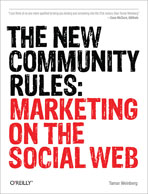This is a guest post by Brad Shorr.
Traffic is a poor measurement of Internet marketing success, although many firms focus on it. While having lots of site visitors may give your ego a boost, traffic alone doesn’t pay the bills. Unless visitors convert, they’re just numbers.

Business Model and Content Issues
The real key, of course, is attracting qualified traffic to your site. If you’re selling veterinary supplies, it won’t matter much if your blog is popular with attorneys or foodies. So the first question to ask is, what sort of visitors am I really trying to attract?
The more precisely you narrow this down, the more productive your marketing will be. For instance, going from broad to narrow, a marketing firm’s audience could be defined as:
- Marketing services
- Marketing services in North America
- Social media marketing services in North America
- Twitter support services in North America for $100MM+ revenue firms
- Twitter consulting services in North America for $100MM+ revenue firms
Obviously, there are tradeoffs in going narrow versus wide. If you go too narrow, you might not achieve a critical mass of traffic: if your conversion rate is one out of 20 and you only get 18 visitors a month, a whole month or several months could go by with no conversions at all.
For this reason, it’s important to really understand the value of a conversion. There are any number of ways to look at this, but one that is frequently overlooked is the lifetime value of a customer.
For instance, an individual order might generate only a few hundred dollars of profit. However, if your average customer places that order five times a year and stays with you for five years, the lifetime value of that customer is much higher than an individual transaction would suggest.
In some situations, the lifetime value of a particular type of customer is so high that a handful of conversions in a year are enough to justify a significant marketing spend. These are situations that are well suited to narrow audience targeting.
A bigger and more common problem, though, is targeting too wide an audience. I learned about this the hard way starting in 2005 when I was a freelance marketing consultant. My blog became quite popular, but most of the sales leads it generated were too far away, too big, too small, or outside my area of expertise.
The good news about this is that it forced me to sharpen my business model — because only then could I begin to properly focus my marketing efforts. So a good two-part question to ask yourself is, what am I really trying to sell, and who is my ideal customer? In terms of content creation, knowing this means everything, because then you can build content — web pages, blog posts, PPC ads or whatever — that is supremely relevant, and relevance is the key to driving qualified organic traffic, and also the key to driving conversions.
Entrepreneurs in particular loathe putting limits on themselves. They resist restricting themselves to a particular geography or a specific set of selling conditions. At heart, they believe they are creative and flexible enough to sell everything to everybody.
Even if this belief were true, trying to market everything to everybody is a highly ineffective strategy. First, by trying to appeal to everyone, you won’t stand out as being especially useful to anyone. Second, broad targeting is expensive. For instance, an organic or paid search campaign that attempts to sell the world could involve tens of thousands of keywords. On the other hand, a reasonably targeted campaign could reduce the number to a manageable, budget-friendly level.
Over to you
How well focused is your marketing communication?
Social Media Issues
Using social for referrals
Unfortunately, social media can be a rich source of poor traffic. Depending on your niche, it can be extremely difficult to find a relevant audience. How many people are interested in talking about septic tank repair on Facebook, or root canal procedures on Twitter? What sometimes happens is, in a quest to build their social media communities, firms start creating and/or sharing content that is barely relevant in their niche or completely disconnected from their business.
This is a wrongheaded strategy — maybe. Conventional marketing wisdom says that having thousands of irrelevant followers is completely useless from an ROI (return on investment) standpoint. However, there is a way to make non-prospect followers produce revenue that works for some types of businesses. What I’m thinking about here is referrals.
Referral generation is a popular and effective strategy for marketing firms. A lot of us write stuff for other marketers, not potential clients. This makes sense because most marketers use social media, whereas their ideal prospects may not. By encouraging referrals or creating formal referral reward programs, marketers can gain tremendously valuable leads from their social media connections that are there just for the asking. But you still have to ask.
Encouraging referrals through social media works for many types of businesses. When crafting a social media referral program, here are a few things to keep in mind.
- Let referrers know exactly what type of lead you’re looking for.
- Give referrers an ultra-simple, jargon-free value proposition, so they can explain why their friends should contact you.
- Give referrers a process — a submit form on your Facebook page, a submit form on your site tweeted periodically, etc.
- Offer an incentive.
It boils down to this: make it easy for referrers. Social media is by nature social. Your connections are favorably disposed to you and place value on the relationship, but it’s up to you to cultivate it.
Does your social content float like a butterfly or sting like a bee?
Beyond referrals, here are ways to bring more qualified traffic to your site through social media.
- Use descriptive post titles rather than tabloid-style for social sharing effectiveness. Serious prospects want facts, not fluff.
- Keep your social communities relevant. Clean up your Twitter trash with Twit Cleaner, don’t add Google+ circles just because they’re there, don’t encourage irrelevant Facebook fans with irrelevant chat, etc.
- Don’t be afraid to sell. If you run a business, social connections will expect and accept an occasional sales pitch.
- Conduct contests on your social media sites that offer free or discounted services. Contests that give away irrelevant prizes won’t attract relevant participants.
- Add social media landing pages to your site. These pages can include calls to action for prospects and referrers.
- Keep up a steady presence. Consistency gives people confidence to escalate a business relationship. Firms that pop in and out of social media come off as erratic and unreliable.
Over to You
- What do you do to draw qualified traffic to your site?
- Do you find social media to be a good source of new business? Why or why not?
Brad Shorr is Director of Content & Social Media for Straight North, a full-service Internet marketing agency.




Thank you…..that’s all I can say. If I had a dime for every time someone said, there is no ROI for my product on social networks…
Being able to take this to them and show them the power of the referral generation is huge. And you’re point is well made. I can’t think if a single person (ok, maybe a few) who have said, hey I saw you on Twitter and I want you to build our website. What I can say, is that there are dozens of tweeps who have recommended our company to others and yes, we have ended up building their websites.
Hi Ally, Thanks for sharing your experience — this is exactly how things play out. Brand recognition through social media leads to referrals, even though quantifying the impact is extremely challenging.
Quite true! That brand referrals through social media is quite a risky and daring job. Once done with scrutiny and care can also result in desired ROI and great responses. Thank you for this article.